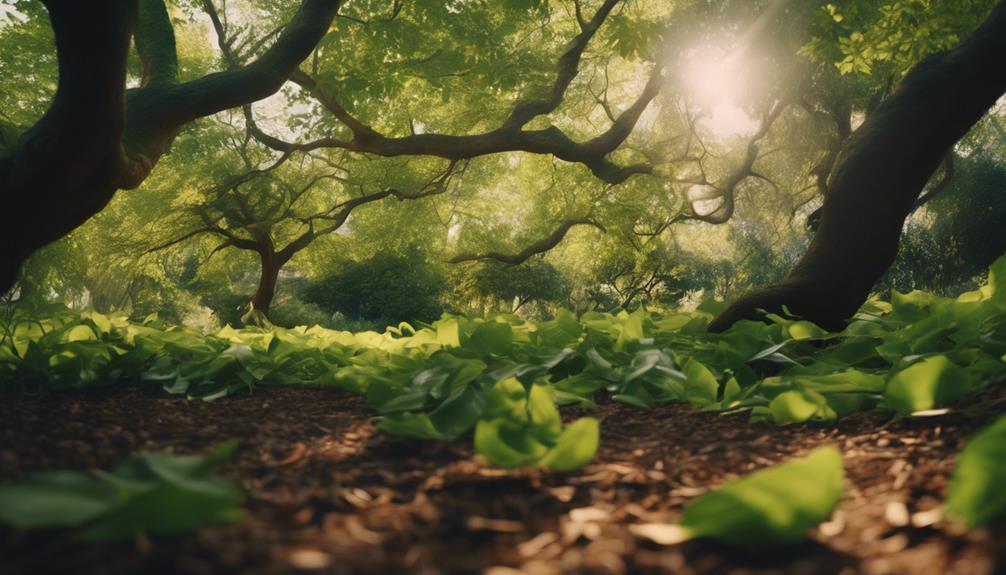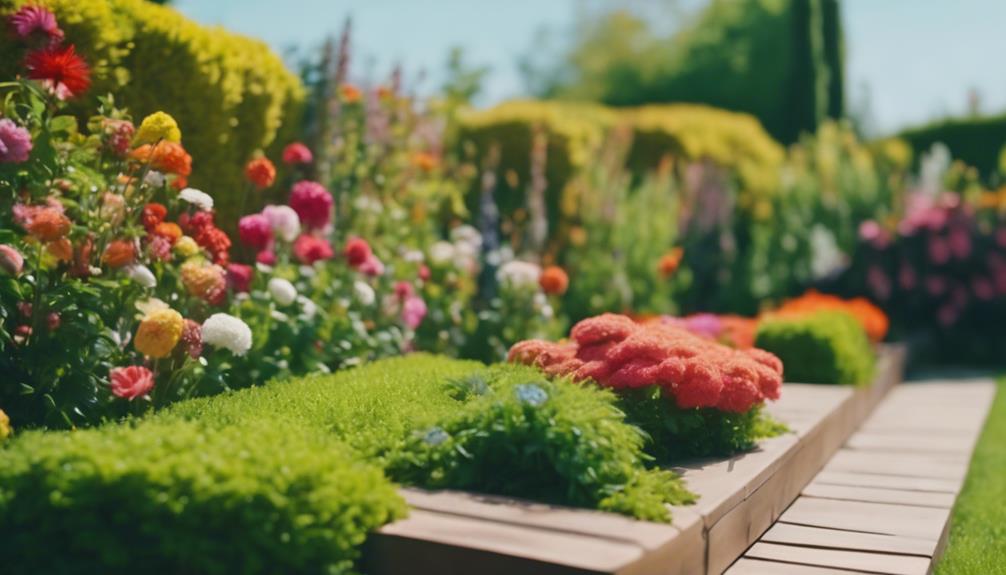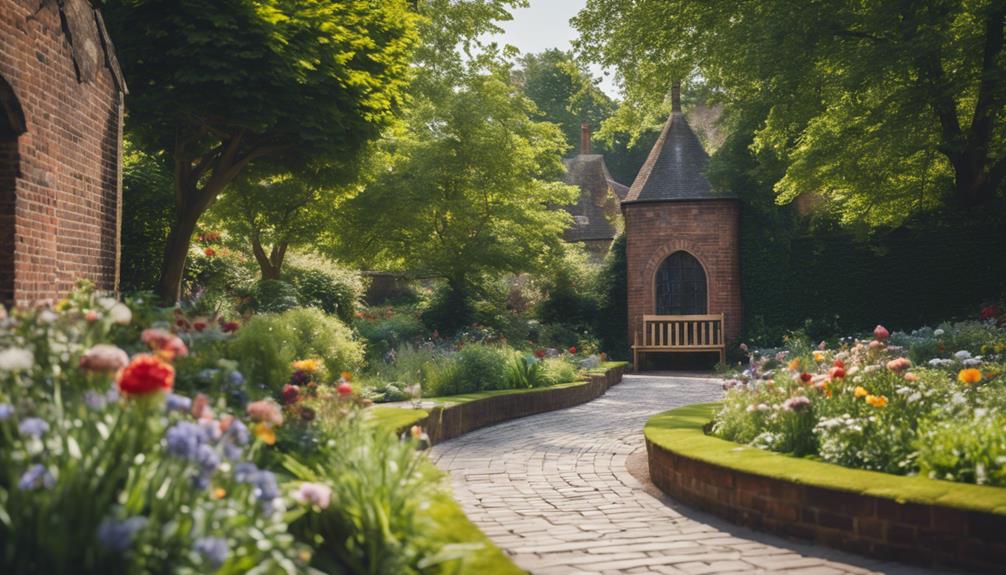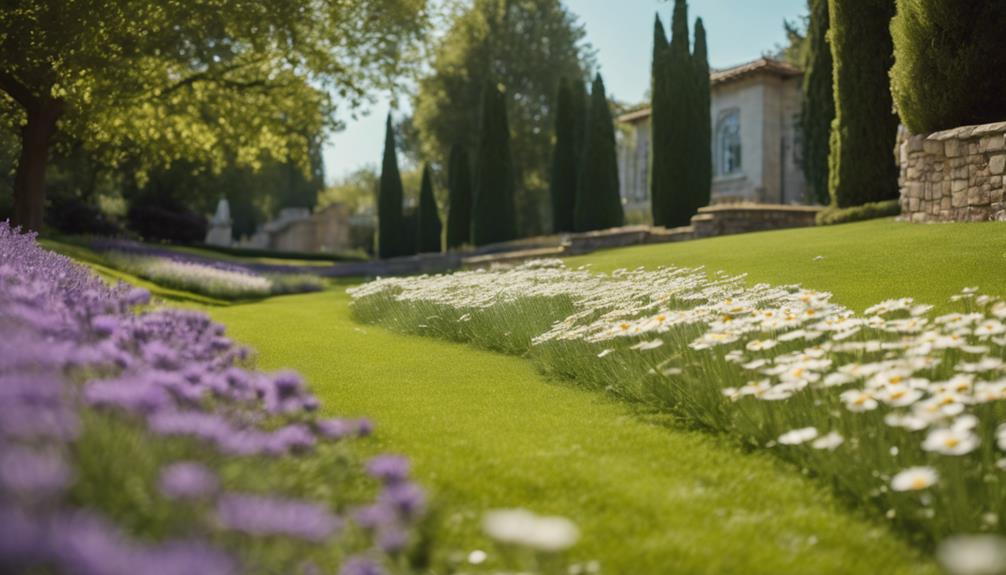
Fence Repair Harborne
6 December 2024
Hard Landscaping Selly Oak
6 December 2024The Importance of Tree Pruning in Oldbury
When it comes to maintaining the health and beauty of your garden, tree pruning in Oldbury is absolutely essential. Think of it as giving your trees a regular check-up. Just like we need to trim our hair for it to grow strong and healthy, trees require pruning to thrive. By removing overgrown or dead branches, you not only enhance their appearance but also reduce potential hazards. After all, nobody wants a rogue branch falling during a storm!
Promoting Healthy Growth
One of the primary benefits of regular pruning is the improvement of air circulation and sunlight penetration. Just imagine trying to breathe in a crowded room; it's not easy! Trees need that fresh air and sunshine to flourish, and proper pruning ensures that every leaf gets its fair share. Techniques such as crown reduction and deadwooding can significantly contribute to a tree's overall health, promoting robust growth and a vibrant ecosystem. So, don't just leave them to their own devices; give them a helping hand!
Choosing the Right Professional
Selecting a qualified tree surgeon is fundamental to effective pruning. It's not just about picking a name out of a hat. Look for someone with experience, relevant certifications, and glowing customer reviews. A professional with a good track record can transform your outdoor space while ensuring safety. Trust me, you wouldn't want to hand your garden over to just anyone.
Transform Your Outdoor Space
Imagine stepping into your garden and feeling like you're in a lush paradise. Engaging with a professional can turn that dream into reality. They'll not only enhance the aesthetic appeal of your trees but also ensure that they're healthy and thriving. Just think about it: a well-maintained garden can become a serene escape from the hustle and bustle of daily life.
Get Started Today!
So, why wait? Discover how expert tree pruning can elevate your garden to new heights. If you're in Oldbury and need a hand, don't hesitate to reach out to your local tree surgeon. They're just a phone call away, ready to help you cultivate a beautiful, healthy outdoor space. Call us today at [insert contact information], and let's get those trees trimmed and thriving!
In summary, tree pruning is more than just a chore; it's a vital practice that benefits both you and your trees. Embrace the beauty of your landscape and invest in its future—your garden will thank you for it!
Importance of Tree Pruning
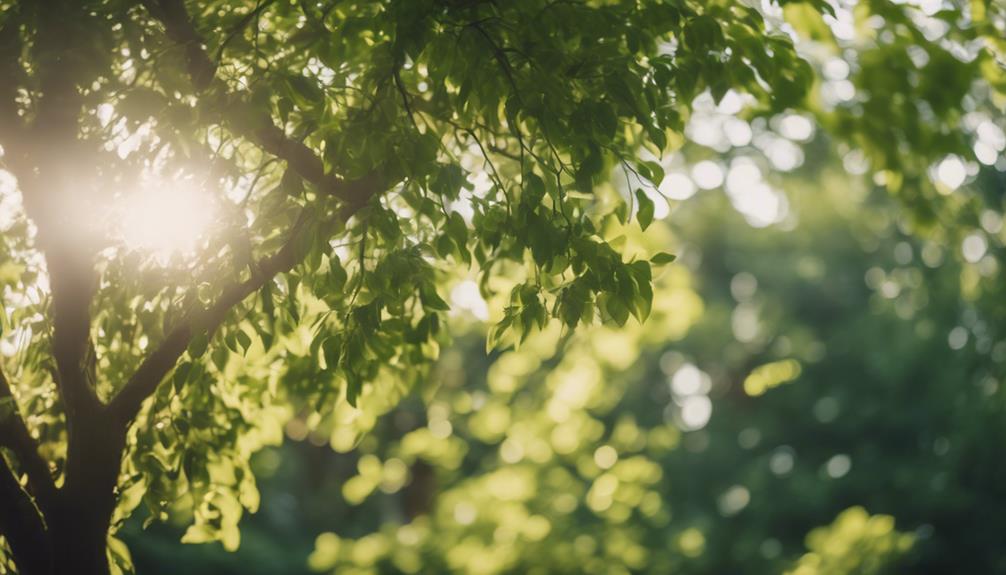
The Essential Art of Tree Pruning
Why Prune?
Tree pruning is not just a chore; it's a vital practice that ensures the health, safety, and aesthetic appeal of our green companions. Think of it as giving your trees a well-deserved haircut. When done correctly, pruning promotes robust growth, prevents potential hazards, and enhances the overall beauty of your landscape.
Healthy Growth
Imagine a tree struggling to breathe—clogged up with dead or diseased branches. When we prune these away, we allow air circulation and sunlight to penetrate the canopy, which are essential for a tree's vitality. This is akin to opening a window on a stuffy day; it refreshes the entire environment. Regular pruning not only helps in maintaining the tree's health but also encourages fruit production and flowering in various species. So, if you fancy a bountiful harvest or vibrant blooms, a little pruning goes a long way!
Safety First
Now, let's talk safety. Nobody wants to play dodgeball with falling limbs! Pruning reduces the risks associated with hazardous branches that could potentially harm individuals or properties. It's a proactive approach that ensures your garden remains a safe haven for kids, pets, and, of course, your beloved plants. Think of it as a tree's bodyguard—keeping things secure and sound!
Aesthetic Appeal
Let's not forget the visual delight that well-pruned trees bring to our gardens. They create a sense of order and elegance, elevating the overall aesthetic. Picture a landscape filled with beautifully shaped trees, each one standing proud in its own right. Well-pruned trees can transform an ordinary garden into a stunning outdoor masterpiece, making you the envy of your neighbours.
The Bigger Picture
But it's not just about beauty and safety; pruning plays a crucial role in fostering a thriving ecosystem. By encouraging healthy trees, we support a habitat for a myriad of wildlife, from chirping birds to buzzing bees. It's a delightful reminder that our gardens are not isolated but part of a larger environmental tapestry.
Get Pruning!
In a nutshell, strategic tree pruning is more than just a seasonal task; it's a fundamental practice that ensures the longevity of our trees and enriches the landscape value. So, why not grab those secateurs and give your trees the care they deserve? If you're unsure where to start, consider reaching out to a local tree care professional. They can provide valuable guidance tailored to your specific garden needs.
Signs Your Trees Need Pruning
Signs Your Trees Need Pruning: Keeping Your Greenery in Tip-Top Shape
Recognising the signs that your trees need pruning is essential for maintaining their health, safety, and aesthetic appeal. After all, we want our leafy friends to thrive in our gardens! So, let's delve into the tell-tale signs that your trees might be crying out for a trim.
Overgrown Branches: When Nature Gets a Bit Too Comfortable
First and foremost, take a look at those branches. Are they overgrown and blocking sunlight or encroaching on buildings? Think of it this way: if your tree is casting a shadow over your prized petunias or scratching the paintwork of your house, it's time for a conversation about pruning. Overgrown branches can also pose risks, particularly during storms when they become potential projectiles.
Dead or Dying Limbs: The Red Flags of Tree Health
Next, keep an eye out for any dead or dying limbs. These are the tree's equivalent of a bad haircut—best removed before they cause further damage. Not only do they look unsightly, but they can also be a hazard, potentially falling and causing harm to people or property. If you spot branches that are brittle, discoloured, or devoid of leaves, it's time to take action.
Excessive Foliage Density: Breathing Room for Your Trees
If your tree resembles a dense jungle rather than a well-kept garden feature, it may need a good thinning out. Excessive foliage density can hinder air circulation and sunlight penetration, which are vital for a tree's overall health. Just imagine being stuck in a crowded lift—nobody enjoys that! Thinning helps your tree breathe easier and can even encourage more robust growth.
Pests and Diseases: The Uninvited Guests
Now, let's talk about those pesky pests and sneaky diseases. If you notice discoloured leaves or peculiar growth patterns, your tree might be in trouble. It's like spotting a nasty cold in a friend—you want to help before it gets worse. Addressing these issues promptly can save your tree and keep your garden looking lovely.
Crossing or Rubbing Branches: A Recipe for Disaster
Last but not least, keep an eye out for branches that are crossing or rubbing against one another. This can lead to injury and decay, much like two friends arguing over the last biscuit! If they're not separated, they could damage each other over time. A little early intervention can prevent a bigger problem down the line.
Proactive Pruning: A Vital Step for Tree Care
In conclusion, proactive pruning is key to preserving the vitality and beauty of your trees. It's not just about making them look good; it's about ensuring they remain healthy and safe for years to come. So grab your pruning shears and give your trees the attention they deserve!
If you're unsure where to start, don't hesitate to reach out to a local tree care professional. They can guide you through the process and help you achieve a garden that's not only beautiful but also healthy. After all, a well-pruned tree is a happy tree!
Happy gardening! ��
Benefits of Professional Pruning
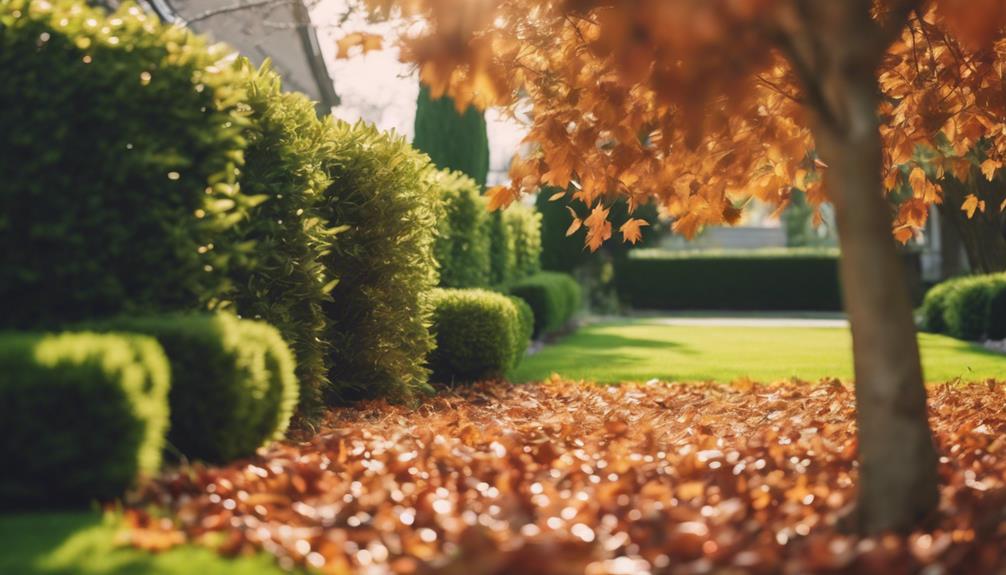
The Benefits of Professional Pruning: A Smart Investment for Your Landscape
Engaging a professional for pruning isn't just a good idea; it's a savvy investment in the health and beauty of your garden. Think of skilled arborists as the doctors of the tree world. They have the expertise to diagnose various tree conditions, spotting issues like disease, pest infestations, or structural weaknesses before they escalate into major problems.
Boosting Tree Vitality
Imagine your trees as your garden's very own superheroes. Just as a good workout regimen can enhance a person's health, targeted pruning techniques can boost a tree's vitality, ensuring it grows strong and lives a long life. Professional arborists understand the delicate balance of nature and will prune with precision, allowing for superior growth and longevity.
Safety First: Minimising Risks
Let's face it: no one wants to deal with the aftermath of a falling branch. It can be a real headache, not to mention dangerous! Professional pruning mitigates these risks, keeping both your property and the people around it safe from potential hazards. A well-pruned tree is less likely to shed branches unexpectedly, which is a relief for any homeowner.
Aesthetically Pleasing Landscapes
Now, let's talk about the *wow* factor. Expertly pruned trees can transform an ordinary garden into a stunning landscape. They not only enhance the visual appeal but can also increase your property's value. A beautifully manicured tree is like the cherry on top of a cake—it's the finishing touch that leaves a lasting impression on guests and passersby alike.
The Right Tools for the Job
Seasoned professionals come equipped with the right tools and techniques to minimise stress on the tree. This means healthier regrowth and a more vibrant garden overall. Think of it as using the right instruments to play a symphony; it's all about harmony.
Invest in Your Outdoor Space
Ultimately, investing in professional pruning cultivates a *thriving*, safe, and attractive outdoor environment. So, if you've been toying with the idea of sprucing up your garden, don't wait too long! Reach out to a local tree care expert today and set up a consultation. After all, a little professional TLC might be just what your trees need to thrive!
For a consultation, feel free to contact us at [insert contact information]. Let's get those trees looking their best!
Pruning Techniques We Use
Pruning Techniques for Healthier Trees
At our company, we take pruning seriously—it's not just about snipping away branches; it's about nurturing the overall health and beauty of your trees. Our expert team employs a variety of pruning techniques tailored specifically to enhance the health, safety, and aesthetic appeal of your green giants.
Thinning for Better Growth
One of our go-to techniques is the thinning method. Imagine your trees as a densely packed crowd at a concert; they need a bit of breathing room! By selectively removing branches, we allow light and air to penetrate more effectively, which promotes robust growth. This method not only boosts the vitality of your trees but also helps reduce the risk of disease.
Crown Reduction for Storm Safety
Ever had a tree that just keeps reaching for the sky? We employ crown reduction to manage tree height while maintaining its natural structure. This technique is particularly useful during stormy weather, where lower branches can become heavy with rain and pose a risk of snapping. By gently trimming the crown, we minimise this risk while ensuring your tree remains aesthetically pleasing.
Deadwooding for Enhanced Vitality
Nobody enjoys a dead branch hanging overhead, and neither do our trees! Through deadwooding, we remove decayed or damaged branches, which not only improves safety but also enhances the overall vitality of your tree. Think of it as giving your tree a little health check-up; it's a necessary step to keep things thriving.
Directional Pruning for Visual Appeal
We also believe in the art of directional pruning. This technique allows us to shape growth and guide branches toward a desired form—sort of like giving your tree a stylish haircut! Not only does this optimise visual appeal, but it also encourages healthy growth patterns. After all, who wouldn't want their garden to turn heads?
A Tailored Approach
Our systematic approach guarantees that each technique is applied with precision. We take the time to understand the unique needs of each tree, ensuring that our pruning methods are not just effective but also tailored to foster healthier trees. A well-pruned tree doesn't just stand tall; it contributes to the overall beauty of your landscape, creating a serene outdoor environment.
Get in Touch!
If you're ready to give your trees the care they deserve, don't hesitate to reach out. We're just a call away! Let's work together to ensure your trees not only survive but thrive—after all, a healthy tree is a happy tree. Contact us today to schedule a consultation and let's chat about how we can help!
With our expertise and your vision, we can create a landscape that's not just a feast for the eyes but also a sanctuary for nature.
Choosing the Right Tree Surgeon
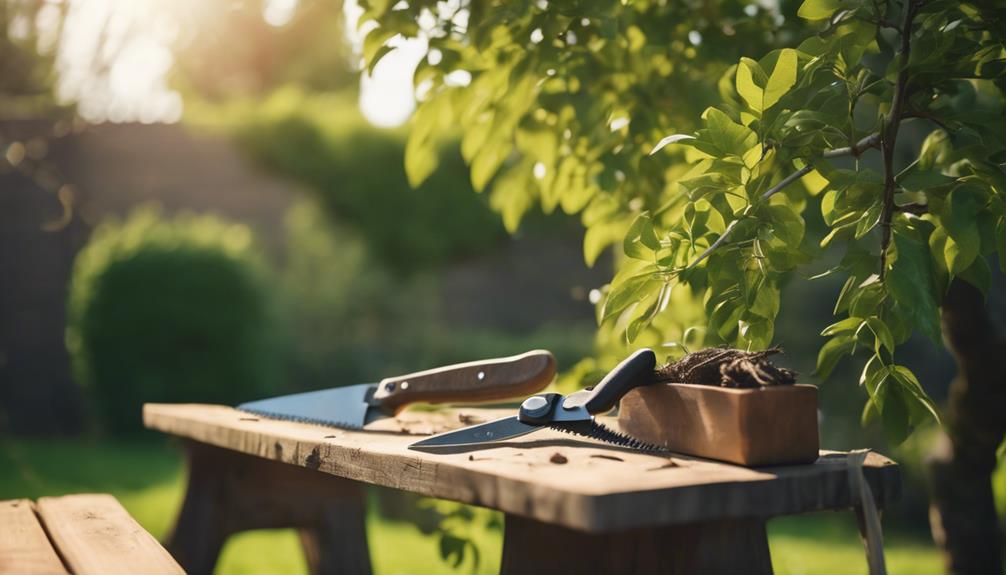
Choosing the Right Tree Surgeon: Your Guide to a Healthy Canopy
Selecting the right tree surgeon is crucial for maintaining the health and beauty of your trees, as well as safeguarding your property. After all, a well-cared-for tree can be the crown jewel of your garden, while a neglected one might resemble a scene from a horror film! So, let's dive into what you should look for when hiring a professional.
Look for Qualifications and Experience
When it comes to tree surgery, qualifications are key. Opt for professionals who have industry certifications and substantial experience. Take Rowan Tree Group, for instance; they specialise in tree pruning services and come highly recommended. A reputable tree surgeon should have a solid track record, be DBS-checked (that's Disclosure and Barring Service for those not in the know), and demonstrate a commitment to wildlife preservation. You wouldn't want to disturb a family of birds nesting in your trees, would you?
Local Knowledge Matters
Experience with local councils and a diverse clientele is a good indicator of a tree surgeon's ability to handle various pruning tasks. If they know the ins and outs of local regulations, it'll save you a headache later on. You might even ask how they've dealt with specific issues in your area—like that pesky ash dieback disease that's been causing concern lately.
Check Reviews and Ratings
Don't just take their word for it; read customer reviews and ratings. For example, Tree Surgery Oldbury boasts an impressive 4.9 rating. This kind of feedback can give you confidence in their reliability and service quality. It's a bit like checking restaurant reviews before you book a table—you want to know you're making a solid choice!
Engage with the Professionals
A good tree surgeon will be happy to discuss your needs and provide a detailed plan of action. Don't hesitate to ask questions about their methods, safety measures, and how they plan to preserve the local ecosystem during their work. After all, you're not just hiring someone to chop away; you're seeking a partner in nurturing your green space.
Final Thoughts: Make the Call!
In summary, choosing the right tree surgeon isn't just about getting the job done; it's about finding a trustworthy expert who understands the art and science of tree care. So, if you're ready to give your trees the TLC they deserve, don't wait! Reach out to a qualified tree surgeon today and watch your garden flourish.
For more information or to book a consultation, feel free to contact Rowan Tree Group or your local tree surgery experts. Your trees will thank you for it!
Frequently Asked Questions
What Is the Average Cost of Tree Trimming in My Area?
Understanding the Average Cost of Tree Trimming
When it comes to tree trimming, the cost can vary significantly based on several important factors. Understanding these can help you budget effectively for this essential maintenance task. Typically, you can expect to pay anywhere from £50 to £300 for tree trimming services, but let's delve deeper into what influences these prices.
Factors Influencing Tree Trimming Costs
- Tree Size: Naturally, the size of the tree plays a pivotal role in determining the cost. Smaller trees may only require light trimming, which is less labour-intensive and therefore more affordable. Conversely, larger trees often demand more time, expertise, and equipment, pushing the price upwards.
- Location: The location of the tree can also affect the cost. If the tree is situated in a tricky spot—near power lines or on a steep slope, for instance—this can complicate the trimming process and lead to higher charges. It's a bit like trying to navigate a maze; the more obstacles in your way, the longer it takes to reach the exit!
- Service Complexity: Not all trimming jobs are created equal. Some trees may require precise pruning to promote healthy growth, while others could pose potential hazards that need careful consideration. The more complex the job, the higher the potential cost.
Why Tree Trimming Matters
You might wonder, why go through the hassle and expense of tree trimming at all? Well, regular maintenance is crucial for the health of your trees and overall property. Pruned trees are not only better looking, but they are also less likely to suffer from disease and can even enhance the value of your home. Think of it as giving your trees a good haircut; they'll look sharp and flourish beautifully!
Practical Tips for Tree Trimming
If you're considering tree trimming, here are a few tips to keep in mind:
- Get Multiple Quotes: Don't just settle for the first quote you receive. Contact several local professionals to compare prices and services. This can save you a pretty penny in the long run.
- Check Qualifications: Ensure that the tree trimming service you choose is qualified and insured. It's worth its weight in gold to avoid any nasty surprises.
Ready to Trim?
If your trees are starting to look a bit unruly, don't wait for them to become a hazard. Contact a local tree trimming service today for a consultation and get your garden looking its best. After all, a well-maintained garden is not just a joy to behold; it's a safe haven for you and your family.
What Month Is Best to Cut Back Trees?
The Best Time to Prune Your Trees
When it comes to cutting back trees, the sweet spot usually falls between late winter and early spring. This period coincides with the trees' dormant season, which is akin to hitting the snooze button on your alarm clock—everything's still, and the trees are resting, ready to rejuvenate.
Why Late Winter to Early Spring?
Pruning during this time is not just a matter of convenience; it's about reducing stress on the tree. Picture it: the tree isn't busy putting out new leaves or flowers, so it can focus its energy on healing those cuts you've made. By doing this, you're giving your greenery a fighting chance against diseases and pests, which tends to be less of a concern in the cooler months.
For example, if you've got a lovely apple tree that's starting to look a bit unruly, a good prune can help shape it while also improving its fruit yield come harvest time. You wouldn't want to tackle that task in the middle of summer, when the tree is more vulnerable and busy with its own growth.
How to Prune Effectively
Now, you might be wondering how to go about this. Here are a few tips to ensure you're not just hacking away aimlessly:
- Tools Matter: Invest in a good pair of secateurs, perhaps something like the Felco F-2 Classic Manual Hand Pruner. They're a gardener's best friend and make the job much easier.
- Know Your Cuts: Aim to make clean cuts just above a bud facing outward. This encourages the tree to grow in a balanced manner, rather than becoming a tangled mess.
- Less is More: Don't go overboard—removing about 20% of the tree's branches is usually sufficient. Think of it as a haircut; you want it to look tidy without taking off too much length.
The Bottom Line
Timing your tree pruning right is essential for maintaining the health and aesthetics of your garden. Late winter to early spring is your best bet. So, grab those secateurs and get to work—your trees will thank you come blooming season!
If you have questions or need advice about specific tree types, don't hesitate to reach out. Let's keep those branches in tip-top shape together!
What Time of Year Is It Best to Prune Trees?
When is the Right Time to Prune Your Trees?
Pruning trees is a bit like giving them a well-deserved haircut. It's essential for their health and appearance, but timing is everything. Generally speaking, the ideal time to prune trees is during their dormant season, which usually falls in winter. This period is crucial because it allows the tree to recover without the stress of new growth or the risk of disease. When the trees are asleep, they can handle a bit of a trim without the worry of sap bleeding or attracting pesky pests.
Understanding Dormancy
Now, you might wonder, why winter? During these colder months, trees conserve energy and redirect resources, making them less susceptible to stress. Think of it as a winter break – a time when trees can focus on healing and preparing for the vibrant growth of spring. However, the specific timing can vary based on tree species and your local climate. For instance, apple trees might be best pruned in late winter, just before they bud, while oak trees prefer a late winter trim to avoid the risk of oak wilt, a nasty disease.
The Importance of Species-Specific Timing
Knowing your tree species can make all the difference. For example, if you've got a lovely cherry tree in your garden, it's best to prune it just after flowering. This ensures you don't cut off those beautiful blossoms for the next year. On the flip side, if you're caring for non-flowering trees, such as maples, they can often be pruned in late winter without much fuss.
Local Climate Considerations
Moreover, local environmental conditions play a significant role. If you live in a particularly mild area, you might find that trees start budding earlier than expected. Always keep an eye on the weather and adjust your pruning schedule accordingly. A bit of common sense goes a long way here!
A Gentle Reminder
Before you grab those shears, remember that pruning is not just about aesthetics; it's about the health of the tree. A well-pruned tree can lead to better air circulation, reduced risk of disease, and improved fruit production. Just like a well-maintained garden can brighten your day, a healthy tree can elevate the beauty of your outdoor space.
Final Thoughts
Do I Need Permission to Prune a Tree?
Do I Need Permission to Prune a Tree?
Pruning a tree can feel like a noble quest, akin to a knight rescuing a damsel in distress. However, before you grab those shears and charge into the garden, it's crucial to consider whether you need permission. In many cases, especially with protected species or trees located within conservation areas, you might need to seek approval first.
Know the Rules
Imagine this: you're all set to tidy up your garden and enhance your tree's beauty. But wait! Local regulations often have a say in the matter. By consulting your local council or relevant authorities, you can ensure compliance and protect our precious environment. After all, nobody wants to be the unwitting villain in the tale of nature conservation.
The Importance of Compliance
Why is it so important to check? Well, many trees play a vital role in local ecosystems. Some species are protected due to their rarity or ecological significance. Pruning without permission could not only harm the tree but also lead to hefty fines. It's a bit like trying to cut in line at the local bakery – it might seem harmless at first, but you'll soon find yourself on the receiving end of some stern looks!
So, What Should You Do?
- Research Local Regulations: Check with your local council about any specific laws regarding tree maintenance. Websites often provide detailed guidance that's easy to follow.
- Consult Experts: If in doubt, consider hiring a professional arborist. They can provide insight into the best practices for pruning while ensuring you stay within the law. Plus, their expertise can save you from common pitfalls.
- Plan Ahead: If you're looking to prune a tree that might require permission, it's wise to start the process early. Applying for permissions can take time, similar to waiting for the kettle to boil!
Conclusion
In the grand scheme of things, pruning a tree is not just about aesthetics; it's about being a responsible steward of the environment. So before you embark on your pruning adventure, take a moment to ensure you're on the right side of the law. Your garden – and the trees within it – will thank you for it. For any questions or to seek advice, don't hesitate to reach out to your local council or an arborist. After all, a well-informed gardener is a happy gardener!

